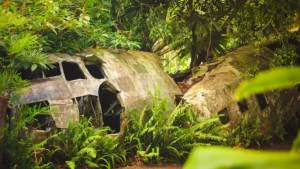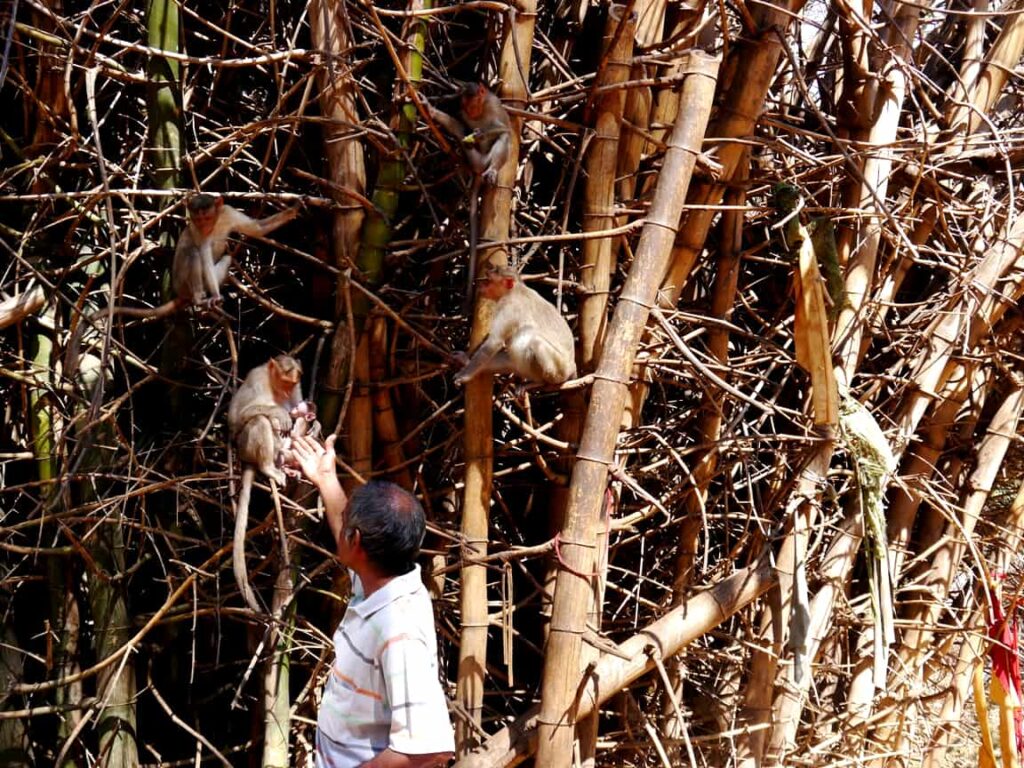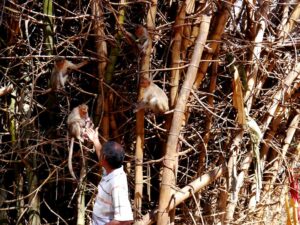The Crash
Three thousand feet above the Amazon’s endless emerald canopy, Antônio Sena felt his world change in an instant. The single engine of his small Cessna 210L coughed, sputtered, and fell silent. Below him stretched an ocean of green—millions of acres of pristine rainforest that had swallowed countless aircraft before his.
The 36-year-old pilot had exactly five minutes to find a landing spot for his aircraft loaded with 160 gallons of highly flammable diesel fuel. This was his first assignment for wildcat miners operating deep in Brazil’s most remote wilderness, a job he’d taken reluctantly as the pandemic strangled his usual income sources.
“There!” he thought, spotting a narrow valley lined with palm trees. “Palm trees mean water—perhaps a river.”
As the Cessna plummeted earthward, Sena radioed his position to anyone listening: halfway to the illegal mine known as California, somewhere in the vast Maicuru reserve where human activity is strictly forbidden.
The plane scraped through the canopy, clipped several trees, and slammed into the forest floor. In those terrifying seconds, Sena experienced something unexpected—not death, but the profound relief of survival. He grabbed his meager supplies—a pocketknife, flashlight, two lighters, and a phone with a dying battery—and scrambled clear just as his aircraft erupted in flames.
The Long Wait
For the first several days, Sena remained near the twisted wreckage, convinced it offered his best hope of rescue. Search planes did come, their engines echoing through the forest canopy as they circled overhead. Each time, he waved frantically and shouted until his voice gave out. Each time, they passed by without seeing him through the dense green ceiling above.
“They flew right over, but couldn’t see me,” Sena would later recall, his voice still carrying traces of that initial desperation.
When it became clear that salvation would not descend from the sky, the pilot made a fateful decision. He would walk out of the Amazon himself.
Into the Green Hell

Sena activated his phone’s GPS one final time, studying the map with the intensity of a man plotting his own resurrection. The Paru River lay roughly 60 miles to the east—the nearest area he knew to be inhabited. With his phone’s battery finally exhausted, he began what would become a 17-mile odyssey through one of Earth’s most unforgiving environments.
His strategy was methodical: walk eastward each morning, using the sun as his compass, then stop in the afternoons to construct shelter from palm fronds and branches. He slept on hillsides, knowing that jaguars, anacondas, and other predators favored the water-rich valleys below.
The forest’s inhabitants weren’t always welcoming. Territorial spider monkeys regularly attacked his makeshift campsites, tearing apart his shelters with vindictive precision. “They are very territorial,” he said. “I never want to cross their path again.”
Yet these same monkeys became his unlikely saviors. Watching them consume small, bright pink fruits called breu, Sena reasoned the berries were safe for human consumption. They became his primary food source, supplemented by only three small eggs from ground-dwelling inambu birds over the entire 36-day ordeal.
The Sound of Hope
Nearly four weeks into his trek, after three days without food, Sena heard something that stopped him cold: the distant buzz of a chainsaw. The mechanical sound, so alien in this primordial wilderness, filled him with an euphoria bordering on delirium.
Fighting every instinct to rush toward the sound as darkness approached, he forced himself to make camp and wait. “God, make them use this chain saw again,” he prayed into the humid night air.
The next morning brought the sound once more, tantalizingly brief. Sena continued east, driven now by more than just survival instinct—he carried hope.
That afternoon, he spotted a blue tarpaulin through the trees, then a figure cracking nuts beside it. After 36 days in the wilderness, having lost 55 pounds, Antônio Sena had stumbled into salvation.
Angels in the Forest
The campsite belonged to Brazil nut collectors led by 67-year-old Maria Jorge dos Santos Tavares. Ironically, financial desperation had driven both men into the forest’s embrace—Sena seeking work with illegal miners, Santos Tavares harvesting nuts in areas her family hadn’t worked for three years.
The pandemic had claimed Santos Tavares’s husband, leaving her family drowning in debt. Their search for deeper forest resources had placed them precisely where Sena needed them most.
Before even radioing her daughter to contact authorities, Santos Tavares fed the emaciated pilot and gave him shelter. Her daughter Mirian initially struggled to convince Sena’s family he was alive—the pilot had been presumed dead for over a month.
“We lost a life, and you gained one,” Mirian told Sena’s relatives. “I suppose that’s the way God wanted it.”
Transformation
After a police helicopter carried him to safety, Sena reflected on his extraordinary ordeal with newfound perspective. The illegal mining industry he had briefly served was systematically destroying the very ecosystem that had sustained him.
“If I had fallen somewhere in a deserted plantation site, I wouldn’t have had water, shelter, or anything to eat,” he observed. “The Amazon is so rich.”
His survival story captivated Brazil, offering rare hope to a nation battered by the pandemic. But it also illuminated the complex web of economic desperation driving environmental destruction in the Amazon—where both pilots seeking work and families seeking survival find themselves drawn into an illegal economy that threatens the forest’s future.
Today, Sena vows never to fly for wildcat miners again. Santos Tavares returned to the forest to continue collecting nuts, their brief intersection in that vast green wilderness having saved one life while highlighting the countless others dependent on the Amazon’s bounty.
In surviving the forest, Sena discovered something profound: the Amazon isn’t just a place to be conquered or exploited, but a living system capable of both taking life and sustaining it—for those wise enough to listen to its ancient rhythms.



